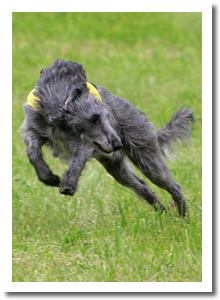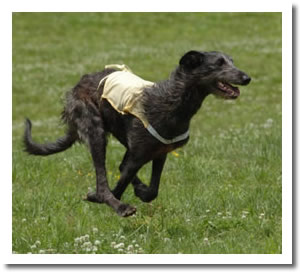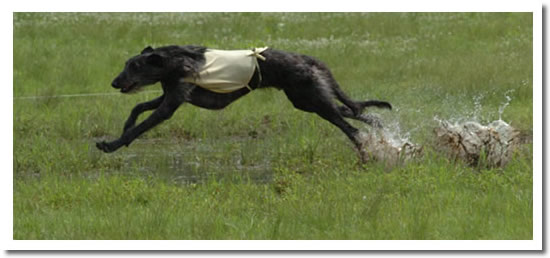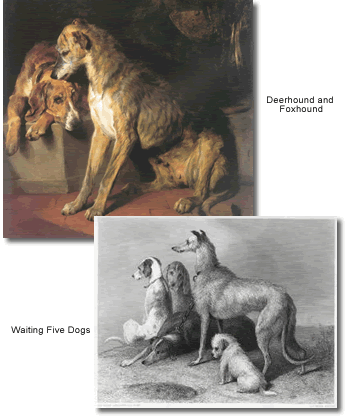close
window
We
can definitely identify the breed as Deerhounds as early as the 16th
and 17th centuries. From there on the term Deerhound has been applied
to the breed, which of all dogs has been found best suited for the pursuit
and killing of the deer.

Photographer:
Shot on Site
|

Photographer:
Shot On Site
The
Deerhound has been greatly valued at all times. The history of the breed
teems with romance increasing in splendor right down through the Age
of Chivalry when no one of rank lower than an earl might possess these
dogs. A leash of Deerhounds was held the fine whereby a noble lord condemned
to death might purchase his reprieve. Records of the Middle Ages allude
repeatedly to the delightful attributes of this charming hound, his
tremendous courage in the chase, his gentle dignity in the home.
|
|
It
was this high esteem in which the Deerhound was held that the desire
for exclusive ownership has at many times endangered the continuance
of the breed.As the larger beasts of the chase became extinct or rare
in England and southern Scotland, the Highlands of Scotland became the
last territory wherein the stag remained numerous in a wild state and,
of course, the last stronghold of this breed.

Photographer:
Shot on Site
|

Photographer: Shot on SiteDr.
Caius, in his book Of Englishe Dogges (1576) speaking of Greyhounds,
relates: "Some are of the greater sorte, some of a lesser; some are
smoothe skynned and some curled, the bigger therefore are appointed to
hunt the bigger beastes, the buck, the hart, the doe."
|
|
The high valuation
of the Deerhound is not the result of rarity so much as the fact that
as a hunter he is pre-eminent, with a high aggregate of desirable characteristics.
He has a keen scent, which may be used in tracking, but it is that combination
of strength and speed necessary to cope with the large Scottish deer (often
weighing 250 pounds) that is most valued. The hounds are usually hunted
singly or in pairs. Centuries of hunting as the companions and guards
of Highland Chieftains have given the Deerhound an insatiable desire for
human companionship. For this reason the best Deerhounds are seldom raised
as kennel dogs.

|







